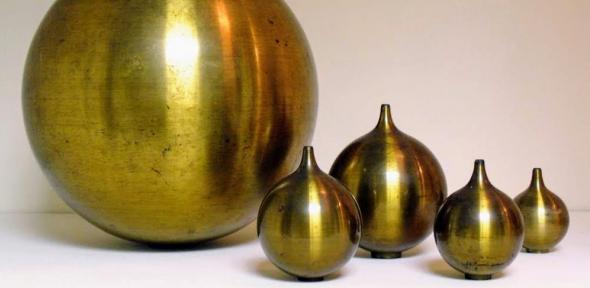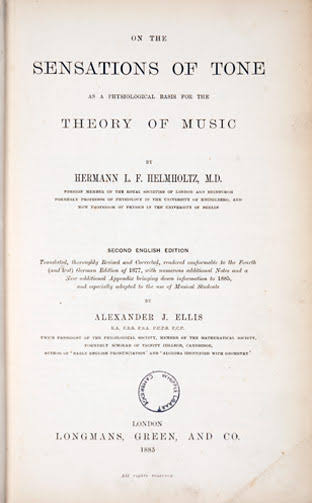Acoustical work
Helmholtz began his work on acoustics in 1856, which culminated in the groundbreaking publication of On the Sensation of Tone as a Physiological Basis for the Theory of Music in 1863. Helmholtz applied the mathematical ideas of François Fourier (1772-1837) to the question of tonal quality, or timbre. Fourier had invented a type of mathematical analysis that demonstrated that any periodic sound wave can be represented as the sum of sine waves having the appropriate amplitude, frequency and phase. This led the way to Helmholtz's reductionist ideas about sound, whereby all complex sounds are composed of simple tones. Helmholtz further applied these ideas to the human perception of sound, arguing that our ears analyze sounds in a similar way to his resonators, with vibrations of different frequencies being extracted from the sound and sent to different nerve endings.
Read more
- Helmholtz resonators: tools for the analysis of sound
- Helmholtz' apparatus for the synthesis of sound
Torben Rees & Jonah Lipton
Torben Rees & Jonah Lipton, 'Herman von Helmholtz (1821-1894)', Explore Whipple Collections, Whipple Museum of the History of Science, University of Cambridge, 2009



